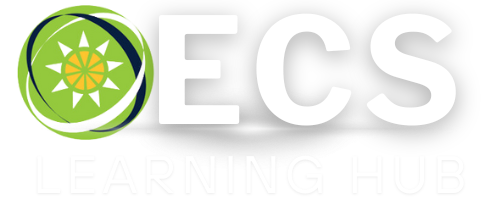Reading Response Centers
A comprehension activity where students respond to texts through various creative centers, developing deeper understanding and engagement with literature.
Activity Overview
Reading Response Centers provide students with multiple ways to engage with and respond to literature through hands-on, creative activities. This differentiated approach allows students to demonstrate their understanding through various modalities including art, drama, writing, and discussion. Students rotate through different centers, each offering unique opportunities to explore characters, plot, setting, and themes while developing critical thinking and creative expression skills.

Learning Outcomes
- Deepen reading comprehension through multiple response modalities
- Develop critical thinking skills through text analysis and interpretation
- Practice expressing ideas through art, writing, drama, and discussion
- Build understanding of story elements: character, setting, plot, theme
- Enhance creativity and personal connection to literature
- Develop independence and choice in learning activities
- Strengthen collaboration and communication skills
Curriculum Connections
ELO 2: Learners will comprehend and respond personally and critically to oral, print, and other media texts.
- SCO 2.1: Experience various texts
- SCO 2.3: Demonstrate comprehension of texts
- SCO 2.4: Respond to texts
ELO 5: Learners will generate, gather, and organize thoughts to explore, clarify and reflect on thoughts, feelings, and experiences as they create a written or representative draft.
- SCO 5.1-5.7: Generate and gather thoughts and ideas
- SCO 5.14-5.18: Create written drafts
Implementation Steps
1Center Setup and Introduction (10 minutes)
- Set up 4-6 response centers around the classroom
- Prepare materials and instructions for each center
- Introduce the book or text students will respond to
- Explain center procedures, expectations, and rotation schedule
- Model one center activity to demonstrate quality responses
2Reading and Initial Response (15-20 minutes)
- Students read or listen to the selected text
- Provide guided reading support as needed
- Encourage note-taking or mental preparation for center activities
- Discuss initial reactions and key story elements
- Allow time for questions and clarification
3Center Rotations (30-40 minutes)
- Students rotate through centers in small groups (3-4 students)
- Spend 8-10 minutes at each center
- Teacher circulates to provide support and feedback
- Students complete response activities at their own pace
- Encourage collaboration and discussion within centers
4Sharing and Discussion (10-15 minutes)
- Gather students to share responses from different centers
- Display artwork, story maps, and written responses
- Facilitate discussion about different interpretations and insights
- Connect responses back to the original text
- Celebrate creativity and thoughtful analysis
5Reflection and Extension (5 minutes)
- Students reflect on their favorite center and why
- Discuss what they learned about the story through the activities
- Make connections to other books or personal experiences
- Plan follow-up activities or independent reading choices
- Save work in reading portfolios for future reference
Response Center Types
Art Response Center
Draw favorite characters, create story scenes, design book covers, or illustrate key events using various art materials.
Story Mapping Center
Complete graphic organizers showing beginning-middle-end, character traits, or problem-solution sequences.
Drama Center
Act out scenes with puppets, create character voices, or perform reader's theater scripts.
Writing Response Center
Write character letters, create alternate endings, or compose simple book reviews and recommendations.
Discussion Center
Use conversation cards to discuss favorite parts, character decisions, or personal connections to the story.
Creative Extension Center
Create story sequels, design character costumes, or build story settings with blocks or craft materials.
Differentiation Strategies
For Students Who Excel
- Provide more complex response templates and open-ended questions
- Challenge them to make text-to-text connections with other books
- Encourage leadership roles in group discussions and activities
- Offer extension activities like creating book trailers or author studies
For Students Who Need Support
- Provide sentence starters and response templates
- Use picture supports and visual organizers
- Allow oral responses instead of written when appropriate
- Pair with supportive partners for collaborative activities
- Focus on simpler response formats initially
Choice and Interest
- Allow students to choose which centers to visit first
- Provide options within each center for different learning styles
- Include books that reflect diverse cultures and experiences
- Connect response activities to student interests and strengths
Assessment Opportunities
Formative Assessment
- Observe student discussions and collaboration
- Review response artifacts for comprehension evidence
- Note student choice patterns and engagement levels
- Document growth in creative expression and critical thinking
Portfolio Development
- Collect response artifacts over time to show growth
- Include student reflections on their learning
- Document favorite books and response preferences
- Track development of comprehension strategies
Comprehension Indicators
- Accurate story element identification
- Personal connections and meaningful responses
- Creative interpretations showing deep thinking
- Ability to support ideas with text evidence
Center Management and Organization
Setup Tips
- Create clear, visual instructions for each center
- Use bins or baskets to organize materials
- Establish a rotation system (timer, music, or signals)
- Designate specific spaces for each type of response
- Include "I'm Done" extension activities at each center
Materials Needed
- Art supplies: paper, crayons, markers, colored pencils
- Graphic organizers and response templates
- Puppets, props, and dramatic play materials
- Writing materials and journals
- Discussion prompt cards and conversation starters
- Building materials, craft supplies for extensions
